Farouk Gulsara's Blog, page 90
July 27, 2020
The story of the fallen
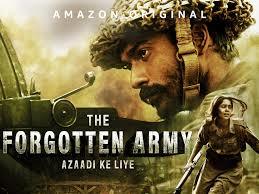 The Forgotten Army, Azaadi Ki Liye
The Forgotten Army, Azaadi Ki Liye
(For Freedom, Hindi; 2020)
Amazon Prime.
26,000 Indians had died under the banner of Indian National Army (INA) while fighting for Independence of India. Their actions triggered the Royal Indian Navy mutiny, which nailed the coffin of the British occupancy in India. The plea for Independence and the spirit of Indianness were supported by the diaspora outside India just to be sizzled out by the historical turn of events. They say that history is written by the victors. This is one clear proof of this statement. History had vilified the efforts of INA and had labelled them as traitors. Their agitations had been marked, not as nationalism but as treason.
 Flag of Azad HindTheir rebel yell, Dilli Chalo (Let's go Delhi), was not in keeping with the narrative of the day then, as dictated by the Father of India and supported by the Congress Party. These people wanted India to be a British dominion to be given crumbs by their colonial masters. As such, Gandhi et al. decreed that Indian should be fighting for the cause of the Allied Forces to stay loyal to their master's path.
Flag of Azad HindTheir rebel yell, Dilli Chalo (Let's go Delhi), was not in keeping with the narrative of the day then, as dictated by the Father of India and supported by the Congress Party. These people wanted India to be a British dominion to be given crumbs by their colonial masters. As such, Gandhi et al. decreed that Indian should be fighting for the cause of the Allied Forces to stay loyal to their master's path.Subash Chandra Bose wanted full Independence from the British, not being a protectorate of Britain. He definitely did not believe that Gandhi's non-violent path would lead to self-rule. He managed to garner support from all the enemies of the British and the Allied Forces. At a time when India, being the subject of the British, was expected to fight for against the Axis Alliance, Bose lobbied for an Army to march with the Japanese against British in their Burmese campaigns. Indian National Army (Azad Hind Fauj) was his brainchild, armed by the Japanese Imperial Army and financed by contributions expatriate Indian civilian volunteers of Malaya and Singapore. Hence, he was labelled as a traitor and enemy of the state.
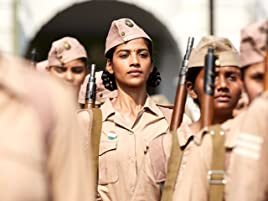 Even though the operatives eventually turned out to be a dangerous one and had to be abandoned due to logistics as the Japanese found the whole exercise an uphill task, the INA did leave its mark. They stirred Indian nationalism. They were instrumental in initiating the Royal Indian Navy mutiny which expedited the British exit from the subcontinent. They were also the first Army (after Russia) to recruit a whole regiment comprising women -The Jhansi Regiment. For that time, the act of Indian women donning pants itself was revolutionary.
Even though the operatives eventually turned out to be a dangerous one and had to be abandoned due to logistics as the Japanese found the whole exercise an uphill task, the INA did leave its mark. They stirred Indian nationalism. They were instrumental in initiating the Royal Indian Navy mutiny which expedited the British exit from the subcontinent. They were also the first Army (after Russia) to recruit a whole regiment comprising women -The Jhansi Regiment. For that time, the act of Indian women donning pants itself was revolutionary. History never really gave the INA its befitting place. They were never given credence as free fighters, only tried as traitors. The 13,000 odd INA soldiers who were apprehended were never given due recognition for their sacrifices and never remunerations reserved for freedom fighters. Their activities actually roused the nation and stirred political consciousness in British colonies. Their soldiers later initiated left-wing and union movements in Malaya, Singapore and even Indonesia. They began to think of Independence. In Malaya, after Merdeka, their members continued carrying education reforms and women empowerment movements at the local and national levels.
History never really gave the INA its befitting place. They were never given credence as free fighters, only tried as traitors. The 13,000 odd INA soldiers who were apprehended were never given due recognition for their sacrifices and never remunerations reserved for freedom fighters. Their activities actually roused the nation and stirred political consciousness in British colonies. Their soldiers later initiated left-wing and union movements in Malaya, Singapore and even Indonesia. They began to think of Independence. In Malaya, after Merdeka, their members continued carrying education reforms and women empowerment movements at the local and national levels.This 5-part miniseries brings its viewers through a nostalgic journey into the past. Using the spruced-up colonial buildings of Singapore, the rubber estates in Malaysia and the jungles of Thailand as backdrops, the director managed to narrate the genesis of INA. Starting with prisoners-of-war of Indian descent serving the British Indian Army, the Japanese riled up patriotism to recruit more volunteers to serve at the Burmese-Indian border in their encounter with the British.

Using characters with names of known figures who had participated in the mission, the storyteller managed to create a love drama of soldiers as they scaled the treacherous terrains of the Arakan and the perilous battles in Manipur.
Janaki is the story refers to Janaki Athi Nahappan who went on to establish Malayan Indian Congress with John Thivy. She continued her social work until her demise in 2014.
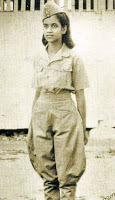 Rasammah Naomi NavarednamRasamma here refers to Mrs FR Bhuphalan, a Malaysian educationist and social activist, the 95-years lady of steel who appears in the media annually during the Merdeka month. The character Lakshmi denotes Dr Lakshmi Swaminathan @ Lakshmi Sahgal @ Captain Lakshmi, who gave up her medical practice in Singapore to join INA in the Azadi movement. She later became a Minister in the defunct Azad Hind Government. After the war, she settled in Kanpur, continued her medical practice, entered politics under the Communist Party banners and passed away at the ripe age of 97 in 2012.
Rasammah Naomi NavarednamRasamma here refers to Mrs FR Bhuphalan, a Malaysian educationist and social activist, the 95-years lady of steel who appears in the media annually during the Merdeka month. The character Lakshmi denotes Dr Lakshmi Swaminathan @ Lakshmi Sahgal @ Captain Lakshmi, who gave up her medical practice in Singapore to join INA in the Azadi movement. She later became a Minister in the defunct Azad Hind Government. After the war, she settled in Kanpur, continued her medical practice, entered politics under the Communist Party banners and passed away at the ripe age of 97 in 2012.A lovely miniseries that educates the ignoramus on the side of history as narrated by the fallen. Excellent cinematography and prudent use of computer graphic imaging (CGI) to recreate the feel of a real war and fairly credible combat scenes. We are relieved of the typical gravity-defying acrobatic battle encounters typified by Bollywood. Worth the watch.
 The plaque erected by the
The plaque erected by the National Heritage Board at Esplanade Park,
marking the INA Monument site in Singapore.
 This work is licensed under a Creative Commons Attribution 4.0 International License.
This work is licensed under a Creative Commons Attribution 4.0 International License.http://asok22.wix.com/real-lesson
http://.facebook.com/farouk.gulsara
www.riflerangeboy.com
This work is licensed under a Creative Commons Attribution 4.0 International License.

Published on July 27, 2020 09:01
July 24, 2020
Death, not the last frontier!
Settum Aayiram Pon (செத்தும் ஆயிரம் பொன்,
Even after death, worth a thousand sovereigns, Tamil; 2020) Netflix
 We paint our faces to make it presentable to the outside world, just like how we dress our dear departed as they leave on their journey to the other side. A make-up artist does that to make the actors look desirable. The undertaker does the same - to showcase the deceased in such a way that the mourners can only see a pleasant looking corpse; devoid of the pain and misery of the tail end of his life.
We paint our faces to make it presentable to the outside world, just like how we dress our dear departed as they leave on their journey to the other side. A make-up artist does that to make the actors look desirable. The undertaker does the same - to showcase the deceased in such a way that the mourners can only see a pleasant looking corpse; devoid of the pain and misery of the tail end of his life.
In a way, life and death are the same. A make-up artist and an undertaker do the same job, masking the unpleasantness of reality. Like a birth which is celebrated with revelry, so should death. The joy of the cry of a newborn child is comparable to the wailing of the aggrieved mourners.
In most Eastern cultures, deaths are noisy and long affairs. The graphic display of emotions and rituals are actually ways to help the relatives to resolve the separation issues and to put a closure to the death of a family member.
This film reminds me of the many Tamil films made in the 1980s with the villages as their backdrop. Much like those movies, the actors are generally newcomers, and the theme is something intertwined with the traditional village folk practices. Here, the filmmaker narrates about the meeting of a grandmother and her granddaughter as well as handling of the issues that kept them apart. The grandmother is the official 'village mourner', someone assigned to create the tone of melancholy in a funeral by belting rhymic songs interspersed with playful use of words in painting deceased's life achievements and setting the mood of loss.
The granddaughter, a make-up artist from Chennai, is summoned to come to the village to settle some property issues. She grudgingly comes. Her parents had had some bad blood with the villagers and had to leave, hence, the resentment. The granddaughter was apparently married off at the age of five to the opposition of her mother. The supposed husband is the one who dressed the dead. In a way, applying make-up is the family tradition; one for the living and one for the departed.
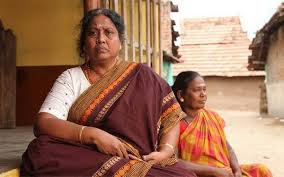 Because of delays in the paperwork of the land transfer, the granddaughter has to stay behind. This becomes an opportune time to rebuild the broken bond and her understanding of the village practices—a great movie with natural acting. The spoken dialogue may appear vulgar, but we have to admit that is reality. Nobody bothers with niceties in real life. The style of photographing is surreal as if the viewers are there in person witnessing the charade. A memorable scene is when a two-timing husband dies in the embrace of his lover and the two women of his life fight over to perform the final rites. This commotion is reminiscent of a moment in a 2009 Japanese movie 'Departures' where a closet crossdresser is wrongly dressed in the wrong garment to the furore of family and relatives.
Because of delays in the paperwork of the land transfer, the granddaughter has to stay behind. This becomes an opportune time to rebuild the broken bond and her understanding of the village practices—a great movie with natural acting. The spoken dialogue may appear vulgar, but we have to admit that is reality. Nobody bothers with niceties in real life. The style of photographing is surreal as if the viewers are there in person witnessing the charade. A memorable scene is when a two-timing husband dies in the embrace of his lover and the two women of his life fight over to perform the final rites. This commotion is reminiscent of a moment in a 2009 Japanese movie 'Departures' where a closet crossdresser is wrongly dressed in the wrong garment to the furore of family and relatives.
The title of the film refers to a Tamil proverb, ‘Yaanai irunthaalum aayiram pon, iranthaalum aayiram pon’ (யானை இருந்தாலும் ஆயிரம் பொன், இறந்தாலும் ஆயிரம் பொன்) which tells the insignificance of the human body. A corpse is worthless once life departs, perhaps only useful as a cadaver in a medical school. An elephant is worth a thousand gold coins dead or alive. A living elephant is helpful for hard labour and a dead one for its tusk and hide.
Worth the while. 9/10.
 This work is licensed under a Creative Commons Attribution 4.0 International License.
This work is licensed under a Creative Commons Attribution 4.0 International License.
http://asok22.wix.com/real-lesson
http://.facebook.com/farouk.gulsara
www.riflerangeboy.com
This work is licensed under a Creative Commons Attribution 4.0 International License.

Even after death, worth a thousand sovereigns, Tamil; 2020) Netflix
 We paint our faces to make it presentable to the outside world, just like how we dress our dear departed as they leave on their journey to the other side. A make-up artist does that to make the actors look desirable. The undertaker does the same - to showcase the deceased in such a way that the mourners can only see a pleasant looking corpse; devoid of the pain and misery of the tail end of his life.
We paint our faces to make it presentable to the outside world, just like how we dress our dear departed as they leave on their journey to the other side. A make-up artist does that to make the actors look desirable. The undertaker does the same - to showcase the deceased in such a way that the mourners can only see a pleasant looking corpse; devoid of the pain and misery of the tail end of his life.In a way, life and death are the same. A make-up artist and an undertaker do the same job, masking the unpleasantness of reality. Like a birth which is celebrated with revelry, so should death. The joy of the cry of a newborn child is comparable to the wailing of the aggrieved mourners.
In most Eastern cultures, deaths are noisy and long affairs. The graphic display of emotions and rituals are actually ways to help the relatives to resolve the separation issues and to put a closure to the death of a family member.

This film reminds me of the many Tamil films made in the 1980s with the villages as their backdrop. Much like those movies, the actors are generally newcomers, and the theme is something intertwined with the traditional village folk practices. Here, the filmmaker narrates about the meeting of a grandmother and her granddaughter as well as handling of the issues that kept them apart. The grandmother is the official 'village mourner', someone assigned to create the tone of melancholy in a funeral by belting rhymic songs interspersed with playful use of words in painting deceased's life achievements and setting the mood of loss.
The granddaughter, a make-up artist from Chennai, is summoned to come to the village to settle some property issues. She grudgingly comes. Her parents had had some bad blood with the villagers and had to leave, hence, the resentment. The granddaughter was apparently married off at the age of five to the opposition of her mother. The supposed husband is the one who dressed the dead. In a way, applying make-up is the family tradition; one for the living and one for the departed.
 Because of delays in the paperwork of the land transfer, the granddaughter has to stay behind. This becomes an opportune time to rebuild the broken bond and her understanding of the village practices—a great movie with natural acting. The spoken dialogue may appear vulgar, but we have to admit that is reality. Nobody bothers with niceties in real life. The style of photographing is surreal as if the viewers are there in person witnessing the charade. A memorable scene is when a two-timing husband dies in the embrace of his lover and the two women of his life fight over to perform the final rites. This commotion is reminiscent of a moment in a 2009 Japanese movie 'Departures' where a closet crossdresser is wrongly dressed in the wrong garment to the furore of family and relatives.
Because of delays in the paperwork of the land transfer, the granddaughter has to stay behind. This becomes an opportune time to rebuild the broken bond and her understanding of the village practices—a great movie with natural acting. The spoken dialogue may appear vulgar, but we have to admit that is reality. Nobody bothers with niceties in real life. The style of photographing is surreal as if the viewers are there in person witnessing the charade. A memorable scene is when a two-timing husband dies in the embrace of his lover and the two women of his life fight over to perform the final rites. This commotion is reminiscent of a moment in a 2009 Japanese movie 'Departures' where a closet crossdresser is wrongly dressed in the wrong garment to the furore of family and relatives.The title of the film refers to a Tamil proverb, ‘Yaanai irunthaalum aayiram pon, iranthaalum aayiram pon’ (யானை இருந்தாலும் ஆயிரம் பொன், இறந்தாலும் ஆயிரம் பொன்) which tells the insignificance of the human body. A corpse is worthless once life departs, perhaps only useful as a cadaver in a medical school. An elephant is worth a thousand gold coins dead or alive. A living elephant is helpful for hard labour and a dead one for its tusk and hide.
Worth the while. 9/10.
 This work is licensed under a Creative Commons Attribution 4.0 International License.
This work is licensed under a Creative Commons Attribution 4.0 International License.http://asok22.wix.com/real-lesson
http://.facebook.com/farouk.gulsara
www.riflerangeboy.com
This work is licensed under a Creative Commons Attribution 4.0 International License.

Published on July 24, 2020 17:01
July 22, 2020
It will take a full turn!
U-Turn (Tamil, 2018)
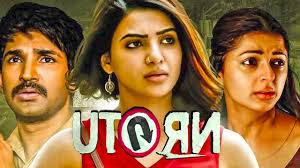 We think that rules only apply to others. We simply break the rules without batting our eyelids. We want the lawmakers to just close one eye, give leniency or forgive with a slap on the wrist. Somehow when the same law is broken by others, we are quick to throw the full might of book at them.
We think that rules only apply to others. We simply break the rules without batting our eyelids. We want the lawmakers to just close one eye, give leniency or forgive with a slap on the wrist. Somehow when the same law is broken by others, we are quick to throw the full might of book at them.
How many times have we seen drunk driving and the sequelae of such acts? How often have we seen friends cajoling their buddies to have 'one more for the road'? This must be what is meant by the saying that the road to hell is paved with good intentions.
This film is a sort of drama with a social message - 'Don't take things for granted!' It is a public service announcement to remind us that every single, seemingly useless regulation means something in the long run.

Many road users take an illegal U-turns atop a flyover by moving the laid-out concrete slabs. After making the intended turn, they do not re-adjust the concrete layout. Many accidents had happened there and an intern journalist, Rachana (Samantha Akkineni), decide to run a cover story on that. She pays a homeless guy to note the plate number of vehicles taking U-turns on the flyover. With her contact at the Road Transport Department, he gets the whereabouts of the vehicle owners. She then interviews them. She goes to the apartment of her first contact but fails. The next thing she finds out is that she is a suspect of the murder of the first contact. Soon she realises that all the persons in her list of offenders have all died recently. And their cause of death was suicide, all of them!
Things get complicated when the superior officers pressure their subordinates to close the case, and Rachana has no means to prove her innocence. Luckily, there is a sympathetic police officer who believes her. Together they try to scale up to the limits of the paranormal to get to the root of the problem.
An entertaining flick with a message.
 This work is licensed under a Creative Commons Attribution 4.0 International License.
This work is licensed under a Creative Commons Attribution 4.0 International License.
http://asok22.wix.com/real-lesson
http://.facebook.com/farouk.gulsara
www.riflerangeboy.com
This work is licensed under a Creative Commons Attribution 4.0 International License.

 We think that rules only apply to others. We simply break the rules without batting our eyelids. We want the lawmakers to just close one eye, give leniency or forgive with a slap on the wrist. Somehow when the same law is broken by others, we are quick to throw the full might of book at them.
We think that rules only apply to others. We simply break the rules without batting our eyelids. We want the lawmakers to just close one eye, give leniency or forgive with a slap on the wrist. Somehow when the same law is broken by others, we are quick to throw the full might of book at them.How many times have we seen drunk driving and the sequelae of such acts? How often have we seen friends cajoling their buddies to have 'one more for the road'? This must be what is meant by the saying that the road to hell is paved with good intentions.
This film is a sort of drama with a social message - 'Don't take things for granted!' It is a public service announcement to remind us that every single, seemingly useless regulation means something in the long run.

Many road users take an illegal U-turns atop a flyover by moving the laid-out concrete slabs. After making the intended turn, they do not re-adjust the concrete layout. Many accidents had happened there and an intern journalist, Rachana (Samantha Akkineni), decide to run a cover story on that. She pays a homeless guy to note the plate number of vehicles taking U-turns on the flyover. With her contact at the Road Transport Department, he gets the whereabouts of the vehicle owners. She then interviews them. She goes to the apartment of her first contact but fails. The next thing she finds out is that she is a suspect of the murder of the first contact. Soon she realises that all the persons in her list of offenders have all died recently. And their cause of death was suicide, all of them!
Things get complicated when the superior officers pressure their subordinates to close the case, and Rachana has no means to prove her innocence. Luckily, there is a sympathetic police officer who believes her. Together they try to scale up to the limits of the paranormal to get to the root of the problem.
An entertaining flick with a message.
 This work is licensed under a Creative Commons Attribution 4.0 International License.
This work is licensed under a Creative Commons Attribution 4.0 International License. http://asok22.wix.com/real-lesson
http://.facebook.com/farouk.gulsara
www.riflerangeboy.com
This work is licensed under a Creative Commons Attribution 4.0 International License.

Published on July 22, 2020 09:01
July 20, 2020
Can't buy happiness, just feel happy!
Two (1965)
Director: Satyajit Ray
In 1964, renowned filmmaker Satyajit Ray was asked to create a short film for ‘ESSO World Theater’, a cultural showcase presented on television and funded by the American oil company Esso. Asked to write and direct the film in English, Ray opted instead to make a film without words. The result is a poignant fable of friendship and rivalry. As he did for many of his movies, Ray composed the music for the film, including the haunting tune played on a flute. After Satyajit Ray was awarded an Honorary Academy Award in 1992, the Academy embarked on an ambitious endeavour to preserve the works of the Bengali filmmaker. “Two,” also known as “Parable of Two,” is part of the Academy’s Satyajit Ray Collection (http://www.oscars.org/film-archive/co...), which includes 18 feature films directed by Ray and preserved by the Archive. (Youtube)
It is ironic that film without words can make one speechless. One can say so much by not speaking at all. It is partly the storyline and also the ingenuity of the director that helps to bring out the unspoken message which is left to everyone's imagination to decipher.
It is ironic that Ray made this short film for a multinational company which is involved in the global promotion of consumerism, materialism and decadence of the environment. I look at it as a slap on the face. From the get-go, one can see a well-fed home-alone well dressed young boy complete with a hat with big ear-like contraptions which will only remind one of Mickey Mouse. And he is seen gulping a beverage from a bottle which has the shape of Coca Cola - what else can it be? He is obviously feeling bored despite all the expensive toys that are lying around him.
Out down from his window, he sees a poor peasant boy having a whale of a time playing a melodious tune on his flute. Jealous that the poor boy can have such a good time, he sabotages his every plaything; banging his drums, shooting with his toy gun and even shooting down his kite.
Despite all the destructive attempts at spoiling the poor boy's play, the latter returns with more ideas to entertain himself. The rich boy remains unhappy despite his access to luxury and the toys at his disposal.
The people in power are hellbent on crushing the hopes and attempts of the less fortunate to progress. The well-heeled feel that only they deserve to be happy. After all, money can buy happiness, they think. The poor, they believe, merit what they have for all their Dionysian outlook of life.
The clip may be voiceless, but the message is loud and clear. Happiness is also a metaphor for the human spirit. The poor are representative of the human race collectively. Despite the repeated insults hurled upon them by the powers that be, the rich multinationals which rapaciously destroy the planet or even Mother Nature who regularly test them with calamities, the human race will never give up. Hitting brick walls has become second nature to them. Overcome they shall.
 This work is licensed under a Creative Commons Attribution 4.0 International License.
This work is licensed under a Creative Commons Attribution 4.0 International License.
http://asok22.wix.com/real-lesson
http://.facebook.com/farouk.gulsara
www.riflerangeboy.com
This work is licensed under a Creative Commons Attribution 4.0 International License.

In 1964, renowned filmmaker Satyajit Ray was asked to create a short film for ‘ESSO World Theater’, a cultural showcase presented on television and funded by the American oil company Esso. Asked to write and direct the film in English, Ray opted instead to make a film without words. The result is a poignant fable of friendship and rivalry. As he did for many of his movies, Ray composed the music for the film, including the haunting tune played on a flute. After Satyajit Ray was awarded an Honorary Academy Award in 1992, the Academy embarked on an ambitious endeavour to preserve the works of the Bengali filmmaker. “Two,” also known as “Parable of Two,” is part of the Academy’s Satyajit Ray Collection (http://www.oscars.org/film-archive/co...), which includes 18 feature films directed by Ray and preserved by the Archive. (Youtube)
It is ironic that film without words can make one speechless. One can say so much by not speaking at all. It is partly the storyline and also the ingenuity of the director that helps to bring out the unspoken message which is left to everyone's imagination to decipher.
It is ironic that Ray made this short film for a multinational company which is involved in the global promotion of consumerism, materialism and decadence of the environment. I look at it as a slap on the face. From the get-go, one can see a well-fed home-alone well dressed young boy complete with a hat with big ear-like contraptions which will only remind one of Mickey Mouse. And he is seen gulping a beverage from a bottle which has the shape of Coca Cola - what else can it be? He is obviously feeling bored despite all the expensive toys that are lying around him.
Out down from his window, he sees a poor peasant boy having a whale of a time playing a melodious tune on his flute. Jealous that the poor boy can have such a good time, he sabotages his every plaything; banging his drums, shooting with his toy gun and even shooting down his kite.
Despite all the destructive attempts at spoiling the poor boy's play, the latter returns with more ideas to entertain himself. The rich boy remains unhappy despite his access to luxury and the toys at his disposal.
The people in power are hellbent on crushing the hopes and attempts of the less fortunate to progress. The well-heeled feel that only they deserve to be happy. After all, money can buy happiness, they think. The poor, they believe, merit what they have for all their Dionysian outlook of life.
The clip may be voiceless, but the message is loud and clear. Happiness is also a metaphor for the human spirit. The poor are representative of the human race collectively. Despite the repeated insults hurled upon them by the powers that be, the rich multinationals which rapaciously destroy the planet or even Mother Nature who regularly test them with calamities, the human race will never give up. Hitting brick walls has become second nature to them. Overcome they shall.
 This work is licensed under a Creative Commons Attribution 4.0 International License.
This work is licensed under a Creative Commons Attribution 4.0 International License. http://asok22.wix.com/real-lesson
http://.facebook.com/farouk.gulsara
www.riflerangeboy.com
This work is licensed under a Creative Commons Attribution 4.0 International License.

Published on July 20, 2020 09:24
July 18, 2020
It's so easy to fall in love?
Krishna and His Leela (Telugu, 2020)
Netflix
 Even though this film has just been released, it has kicked up such a storm over the cyberworld. Hashtags like #BoycottNetflix and #KrishnaAndHisLeela are trending. People are calling @NetflixIndia Hinduphobic, citing many of its latest productions apathetic to the Hindu sentiments. Films like Sacred Games, Bulbul, Ghoul, Delhi Crimes and Leila have allegedly denigrated the Hindu deities. In this offering, is it a merely by chance that the main character's name coincides with the protagonist of the epic Mahabharata? Krishna in the movie is an indecisive chap who conveniently two-times his two girlfriends whose names just happens to be Lord Krishna's two of His eight queen-consorts, Radha and Satya. There is a third girl whose name sounds similar to Rukmini.
Even though this film has just been released, it has kicked up such a storm over the cyberworld. Hashtags like #BoycottNetflix and #KrishnaAndHisLeela are trending. People are calling @NetflixIndia Hinduphobic, citing many of its latest productions apathetic to the Hindu sentiments. Films like Sacred Games, Bulbul, Ghoul, Delhi Crimes and Leila have allegedly denigrated the Hindu deities. In this offering, is it a merely by chance that the main character's name coincides with the protagonist of the epic Mahabharata? Krishna in the movie is an indecisive chap who conveniently two-times his two girlfriends whose names just happens to be Lord Krishna's two of His eight queen-consorts, Radha and Satya. There is a third girl whose name sounds similar to Rukmini.
The fact that the protagonist pushed the boundary of public 'Indian' decency that ired viewers more. In most Indian movies, the story of a hero is only allowed to be engaged in relationships with more than one partner only when it is a comedy film or for actors in villainous roles. Still, engaging in sexual relations with more than one is taboo. Sex is revered a special status that is only reserved for that one true love. If a hero sacrificing his true love to marry someone else to defend social mores, that is alright, but not a wilfully two-timing. Characters with godly names and pushing the social boundaries is a tad too much for the public liking.
It seems portrayal of Jesus Christ as a nose-ring bearing lesbian woman by Paris Jackson (daughter of the King of Pop) in a new movie 'Habit' is not okay. We all know what happened to Salman Rushdie when his satire 'Satanic Verses' mocked the Prophet. The Hindus are the harmless punching backs. Even the local stand-up comedy scene is bountiful with jokes with all religions except Islam for fear of being accused of being Islamophobic and of bearing the brunt of the rage of its believers.
 Ashtabharya (8 consort-queen) with Krishna -
Ashtabharya (8 consort-queen) with Krishna -
19th Century Mysore painting.A few new trends are seen in the lifestyles of the young adults as the norm, as suggested here. Once one is of a certain age, there is a strong compulsion to explore and prove their sexual identity as well as to fulfil their sexual appetite. Living off their relatively well-heeled parent(s), they do not need to think of their essential day-to-day survival needs. Maybe sexual prowesses has become another basic tenet to prove their existence. Their future is the last thing they consider. Time just passes by as they search in vain their passion, their raison d'être, as they drag their sorry ass slugging through one frustrating task after another. Did I mention alcohol flows like a river at every insignificant moment of their life? True, they drink occasionally, but every occasion is a reason to get drunk.
Overindulgence in intoxicants is not seen as a sign of being irresponsible but of living life to the max. At least that is what the media and celluloid pseudo-world seem to glorify. It is as though they deserve it, they earned it for all the troubles and difficulties they go through in modern life. Every generation thinks they had it tough and the generation before and after them had it on a platter.
Maybe this is the subtle way how the East India Company with its Scottish doctor-trader, Dr William Jardin, defeated the mighty Chinese around the time before the Opium Wars. They basically weakened the Chinese bureaucracy and machinery into becoming drug addicts. Like a bacteriophage, the British took over the driver's seat and the whole car, i.e. Hong Kong as the entire Chinese machinery was paralysed. In their subtle way again, the entrepreneurs of the world have made beer-drinking and football game revelry synonymous. Is this a secret ploy by the anarchist to weaken mankind and turn us all to obedient automatons.
The movie also questions that perhaps the male gender, often accused of showing its toxicity through its patriarchal set of social rules, have gone all mellow. To conform to political correctness, not to rock the status quo or create ripples in a perceived stable society, they have to just take dictation to what the fairer sex recites. Yes, you can; no, I feel violated; I will tell you when; stop means stop are the buzz words that define the dynamics of modern boy-girl relationships.
 Me, glad the rat race is ending as I set into the horizon.
Me, glad the rat race is ending as I set into the horizon.
 This work is licensed under a Creative Commons Attribution 4.0 International License.
This work is licensed under a Creative Commons Attribution 4.0 International License.
http://asok22.wix.com/real-lesson
http://.facebook.com/farouk.gulsara
www.riflerangeboy.com
This work is licensed under a Creative Commons Attribution 4.0 International License.

Netflix
 Even though this film has just been released, it has kicked up such a storm over the cyberworld. Hashtags like #BoycottNetflix and #KrishnaAndHisLeela are trending. People are calling @NetflixIndia Hinduphobic, citing many of its latest productions apathetic to the Hindu sentiments. Films like Sacred Games, Bulbul, Ghoul, Delhi Crimes and Leila have allegedly denigrated the Hindu deities. In this offering, is it a merely by chance that the main character's name coincides with the protagonist of the epic Mahabharata? Krishna in the movie is an indecisive chap who conveniently two-times his two girlfriends whose names just happens to be Lord Krishna's two of His eight queen-consorts, Radha and Satya. There is a third girl whose name sounds similar to Rukmini.
Even though this film has just been released, it has kicked up such a storm over the cyberworld. Hashtags like #BoycottNetflix and #KrishnaAndHisLeela are trending. People are calling @NetflixIndia Hinduphobic, citing many of its latest productions apathetic to the Hindu sentiments. Films like Sacred Games, Bulbul, Ghoul, Delhi Crimes and Leila have allegedly denigrated the Hindu deities. In this offering, is it a merely by chance that the main character's name coincides with the protagonist of the epic Mahabharata? Krishna in the movie is an indecisive chap who conveniently two-times his two girlfriends whose names just happens to be Lord Krishna's two of His eight queen-consorts, Radha and Satya. There is a third girl whose name sounds similar to Rukmini.The fact that the protagonist pushed the boundary of public 'Indian' decency that ired viewers more. In most Indian movies, the story of a hero is only allowed to be engaged in relationships with more than one partner only when it is a comedy film or for actors in villainous roles. Still, engaging in sexual relations with more than one is taboo. Sex is revered a special status that is only reserved for that one true love. If a hero sacrificing his true love to marry someone else to defend social mores, that is alright, but not a wilfully two-timing. Characters with godly names and pushing the social boundaries is a tad too much for the public liking.
It seems portrayal of Jesus Christ as a nose-ring bearing lesbian woman by Paris Jackson (daughter of the King of Pop) in a new movie 'Habit' is not okay. We all know what happened to Salman Rushdie when his satire 'Satanic Verses' mocked the Prophet. The Hindus are the harmless punching backs. Even the local stand-up comedy scene is bountiful with jokes with all religions except Islam for fear of being accused of being Islamophobic and of bearing the brunt of the rage of its believers.
 Ashtabharya (8 consort-queen) with Krishna -
Ashtabharya (8 consort-queen) with Krishna - 19th Century Mysore painting.A few new trends are seen in the lifestyles of the young adults as the norm, as suggested here. Once one is of a certain age, there is a strong compulsion to explore and prove their sexual identity as well as to fulfil their sexual appetite. Living off their relatively well-heeled parent(s), they do not need to think of their essential day-to-day survival needs. Maybe sexual prowesses has become another basic tenet to prove their existence. Their future is the last thing they consider. Time just passes by as they search in vain their passion, their raison d'être, as they drag their sorry ass slugging through one frustrating task after another. Did I mention alcohol flows like a river at every insignificant moment of their life? True, they drink occasionally, but every occasion is a reason to get drunk.
Overindulgence in intoxicants is not seen as a sign of being irresponsible but of living life to the max. At least that is what the media and celluloid pseudo-world seem to glorify. It is as though they deserve it, they earned it for all the troubles and difficulties they go through in modern life. Every generation thinks they had it tough and the generation before and after them had it on a platter.
Maybe this is the subtle way how the East India Company with its Scottish doctor-trader, Dr William Jardin, defeated the mighty Chinese around the time before the Opium Wars. They basically weakened the Chinese bureaucracy and machinery into becoming drug addicts. Like a bacteriophage, the British took over the driver's seat and the whole car, i.e. Hong Kong as the entire Chinese machinery was paralysed. In their subtle way again, the entrepreneurs of the world have made beer-drinking and football game revelry synonymous. Is this a secret ploy by the anarchist to weaken mankind and turn us all to obedient automatons.
The movie also questions that perhaps the male gender, often accused of showing its toxicity through its patriarchal set of social rules, have gone all mellow. To conform to political correctness, not to rock the status quo or create ripples in a perceived stable society, they have to just take dictation to what the fairer sex recites. Yes, you can; no, I feel violated; I will tell you when; stop means stop are the buzz words that define the dynamics of modern boy-girl relationships.
 Me, glad the rat race is ending as I set into the horizon.
Me, glad the rat race is ending as I set into the horizon.
 This work is licensed under a Creative Commons Attribution 4.0 International License.
This work is licensed under a Creative Commons Attribution 4.0 International License. http://asok22.wix.com/real-lesson
http://.facebook.com/farouk.gulsara
www.riflerangeboy.com
This work is licensed under a Creative Commons Attribution 4.0 International License.

Published on July 18, 2020 02:19
July 15, 2020
For some, life is a play toy!
Zodiac (2007)
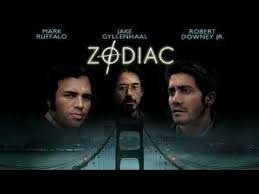 Growing up with an 'over' exposure to many crime dramas, I used to wonder if there were any real people who find intense pleasure in murdering people. And I am referring to a select group of psychopaths called serial killers. And that they did what they did with high precision, covering their tracks well, intelligent chaps who would tease the police with crumbs of clues and laugh all the way to carry on with their next crime.
Growing up with an 'over' exposure to many crime dramas, I used to wonder if there were any real people who find intense pleasure in murdering people. And I am referring to a select group of psychopaths called serial killers. And that they did what they did with high precision, covering their tracks well, intelligent chaps who would tease the police with crumbs of clues and laugh all the way to carry on with their next crime.
I started wondering why all these killers were all whites and are all centred in the USA. The concept of serial killers only became popular in the 1970s, but in reality, the Germans through the 1929 silent movie 'M', introduced the idea of a pedophilic serial-murderer. The first modern serial killer, according to criminologists, must surely be Jack the Ripper in London. Generally, serial killers carry out their crimes in a particular fashion, maintaining a high degree of control over the crime scene, having a solid knowledge of forensic science that enables them to cover their tracks and leaving a sort of a trademark signature. It is as if they are perfecting a grand work of art.
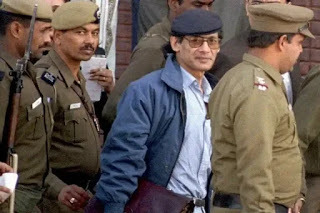 Charles SobhrajIt is generally believed that outside the USA serial killers are rare. There is a reported killer nurse from London and another in South Africa. If one was not in the habit of nitpicking between serial killers, spree killers and mass murderers as well as semantics, he would find many in Asia in the form of Charles Sobhraj (@ Bikini Killer), Lê Thanh Van (Vietnam), Chisako Kakehi (Black Widow from Japan), Yoo Young-Chul (Korean Hannibal Lecter), Tsutomu Miyazaki (Japan), Javed Iqbal Umayr (Pakistan) and Ahmad Suradji (Indonesia).
Charles SobhrajIt is generally believed that outside the USA serial killers are rare. There is a reported killer nurse from London and another in South Africa. If one was not in the habit of nitpicking between serial killers, spree killers and mass murderers as well as semantics, he would find many in Asia in the form of Charles Sobhraj (@ Bikini Killer), Lê Thanh Van (Vietnam), Chisako Kakehi (Black Widow from Japan), Yoo Young-Chul (Korean Hannibal Lecter), Tsutomu Miyazaki (Japan), Javed Iqbal Umayr (Pakistan) and Ahmad Suradji (Indonesia).
 What makes 'The Zodiac Killer' interesting is that his crimes were never solved. Even though the Zodiac Killer operated in the state of California, in the northern part predominantly, the non-cooperation between police counties made the exchange of information difficult in solving the cases. He terrorised in the late 1960s and early 1970s. At least five murder cases are linked to him, but Zodiac claimed to have killed 37 people.
What makes 'The Zodiac Killer' interesting is that his crimes were never solved. Even though the Zodiac Killer operated in the state of California, in the northern part predominantly, the non-cooperation between police counties made the exchange of information difficult in solving the cases. He terrorised in the late 1960s and early 1970s. At least five murder cases are linked to him, but Zodiac claimed to have killed 37 people.
He got his name when he sent a cryptic letter to the newspapers after his second murder. This film tells about how this case tormented a San Francisco Chronicle reporter named Paul Avery, his colleague a cartoonist Robert Graysmith and an inspector Dave Toschi. Even the prime suspect was always Arthur Leigh Allen, all search warrants, handwriting experts' analysis of the Zodiac letters and also the DNA of possible saliva on the Zodiac letter stamps came out to nought.
Many theories have been flying around about the real killer. Amateur investigators, armchair critics, TV and documentary makers, geeks and nerds all have been churning out their two cents' worth on identifying the perpetrator. Some even suggested that he could have been apprehended for unrelated crimes and could have died before making a full confession. Even the Unabomber, an American mathematics professor turned terrorist, was a suspect.
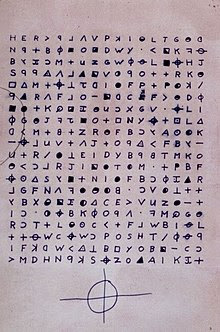 Cryptogram sent by Zodiac to the San Francisco Chronicle.
Cryptogram sent by Zodiac to the San Francisco Chronicle.
 This work is licensed under a Creative Commons Attribution 4.0 International License.
This work is licensed under a Creative Commons Attribution 4.0 International License.
http://asok22.wix.com/real-lesson
http://.facebook.com/farouk.gulsara
www.riflerangeboy.com
This work is licensed under a Creative Commons Attribution 4.0 International License.

 Growing up with an 'over' exposure to many crime dramas, I used to wonder if there were any real people who find intense pleasure in murdering people. And I am referring to a select group of psychopaths called serial killers. And that they did what they did with high precision, covering their tracks well, intelligent chaps who would tease the police with crumbs of clues and laugh all the way to carry on with their next crime.
Growing up with an 'over' exposure to many crime dramas, I used to wonder if there were any real people who find intense pleasure in murdering people. And I am referring to a select group of psychopaths called serial killers. And that they did what they did with high precision, covering their tracks well, intelligent chaps who would tease the police with crumbs of clues and laugh all the way to carry on with their next crime. I started wondering why all these killers were all whites and are all centred in the USA. The concept of serial killers only became popular in the 1970s, but in reality, the Germans through the 1929 silent movie 'M', introduced the idea of a pedophilic serial-murderer. The first modern serial killer, according to criminologists, must surely be Jack the Ripper in London. Generally, serial killers carry out their crimes in a particular fashion, maintaining a high degree of control over the crime scene, having a solid knowledge of forensic science that enables them to cover their tracks and leaving a sort of a trademark signature. It is as if they are perfecting a grand work of art.
 Charles SobhrajIt is generally believed that outside the USA serial killers are rare. There is a reported killer nurse from London and another in South Africa. If one was not in the habit of nitpicking between serial killers, spree killers and mass murderers as well as semantics, he would find many in Asia in the form of Charles Sobhraj (@ Bikini Killer), Lê Thanh Van (Vietnam), Chisako Kakehi (Black Widow from Japan), Yoo Young-Chul (Korean Hannibal Lecter), Tsutomu Miyazaki (Japan), Javed Iqbal Umayr (Pakistan) and Ahmad Suradji (Indonesia).
Charles SobhrajIt is generally believed that outside the USA serial killers are rare. There is a reported killer nurse from London and another in South Africa. If one was not in the habit of nitpicking between serial killers, spree killers and mass murderers as well as semantics, he would find many in Asia in the form of Charles Sobhraj (@ Bikini Killer), Lê Thanh Van (Vietnam), Chisako Kakehi (Black Widow from Japan), Yoo Young-Chul (Korean Hannibal Lecter), Tsutomu Miyazaki (Japan), Javed Iqbal Umayr (Pakistan) and Ahmad Suradji (Indonesia). What makes 'The Zodiac Killer' interesting is that his crimes were never solved. Even though the Zodiac Killer operated in the state of California, in the northern part predominantly, the non-cooperation between police counties made the exchange of information difficult in solving the cases. He terrorised in the late 1960s and early 1970s. At least five murder cases are linked to him, but Zodiac claimed to have killed 37 people.
What makes 'The Zodiac Killer' interesting is that his crimes were never solved. Even though the Zodiac Killer operated in the state of California, in the northern part predominantly, the non-cooperation between police counties made the exchange of information difficult in solving the cases. He terrorised in the late 1960s and early 1970s. At least five murder cases are linked to him, but Zodiac claimed to have killed 37 people. He got his name when he sent a cryptic letter to the newspapers after his second murder. This film tells about how this case tormented a San Francisco Chronicle reporter named Paul Avery, his colleague a cartoonist Robert Graysmith and an inspector Dave Toschi. Even the prime suspect was always Arthur Leigh Allen, all search warrants, handwriting experts' analysis of the Zodiac letters and also the DNA of possible saliva on the Zodiac letter stamps came out to nought.
Many theories have been flying around about the real killer. Amateur investigators, armchair critics, TV and documentary makers, geeks and nerds all have been churning out their two cents' worth on identifying the perpetrator. Some even suggested that he could have been apprehended for unrelated crimes and could have died before making a full confession. Even the Unabomber, an American mathematics professor turned terrorist, was a suspect.
 Cryptogram sent by Zodiac to the San Francisco Chronicle.
Cryptogram sent by Zodiac to the San Francisco Chronicle.
 This work is licensed under a Creative Commons Attribution 4.0 International License.
This work is licensed under a Creative Commons Attribution 4.0 International License.http://asok22.wix.com/real-lesson
http://.facebook.com/farouk.gulsara
www.riflerangeboy.com
This work is licensed under a Creative Commons Attribution 4.0 International License.

Published on July 15, 2020 14:06
July 13, 2020
We are innately racists
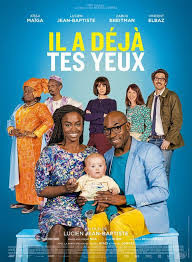
He Even Has Your Eyes.
(Il a déjà tes yeux , French; 2016)
Netflix
It is used to be that bringing u a child was 'child play'. My maternal grandfather's philosophy was thus. Mother Nature has it all for us. Like the trees in the forests and God's creations in the wild, somebody will sow the seeds, and someone else will come to water or feed them. In times of crisis, every man (and child) is on his own, scavenging and struggling towards sustenance. They soon learn survival skills and street smartness.
It used to be that families with way too many mouths to feed willingly give their barren relatives their child to take care. The offspring would grow, knowing very well who the biological and adoptive parents are. Issues of abandonment or neglect and psychological scarring attached to this were unheard of. The whole village would nurture a child.
Such a set up seem so alien now, like almost happening in an alternative universe. We are living in a hostile environment, Man being Man's greatest predator. It is almost like the world will be a better place with its population all wiped out. Child molesters, adults with pedophilic tendencies and cannibals make adoption almost like human trafficking. The agencies assume that adopters are up to something no good unless proven otherwise. The complicated labyrinth of bureaucracy decides who is fit to be a parent and who is not.
It is almost like choosing the correct earring for a lady's attire. Both the couple's biodata is screened with a fine-tooth comb, financial security, criminal records, medical conditions, mental stability, household preparations and colour. It does not matter if the orphan child is deprived in the wilderness in slums in an abusive family elsewhere. Everything needs to be mixed and matched, especially race!
 The public is quick to judge when a child appears different from their parents. It does not make sense, but generally, people are okay with fair-skinned people adopting dark-skinned kids. Conversely, if the parents were dark-skinned and the child light-skinned, they feel hot under the colour. Are they not good enough to care for a pale child? Paradoxically, even within the coloured, a white-skinned is viewed upon as not good enough to be adopted. Are their DNA inferior to carry the burden of their adopted tradition? Assumptions on the liberal attitudes of the biological mother are hurled.
The public is quick to judge when a child appears different from their parents. It does not make sense, but generally, people are okay with fair-skinned people adopting dark-skinned kids. Conversely, if the parents were dark-skinned and the child light-skinned, they feel hot under the colour. Are they not good enough to care for a pale child? Paradoxically, even within the coloured, a white-skinned is viewed upon as not good enough to be adopted. Are their DNA inferior to carry the burden of their adopted tradition? Assumptions on the liberal attitudes of the biological mother are hurled. In Malaysia, I have noticed that it is acceptable for an Indian couple to take in Chinese kids as their own. We have seen these much here over the years. Typical children with Oriental features uttering immaculate Tamil complete with eye and hand gestures. When it is an Indian child is raised by a Chinese family, society becomes curious. We are all inherently racists.
This French comedy looks at this cruel behaviour. A black couple who is an adoption list receives a call that their application is successful. The child is a 4 month-old blue-eyed blond white baby. The parents are over the moon on seeing their baby, but not so with one of the social workers who is hellbent on proving that the new parents of their white child.
The new mother's family is also shocked by the latest addition to the family. Together with the young couple's friends, the movie tries to highlight the farce behind adoption protocols and unsavoury societal perception of interracial adoption.

This work is licensed under a Creative Commons Attribution 4.0 International License.
http://asok22.wix.com/real-lesson
http://.facebook.com/farouk.gulsara
www.riflerangeboy.com
This work is licensed under a Creative Commons Attribution 4.0 International License.

Published on July 13, 2020 16:24
July 11, 2020
Engage, disengage or disappear!
 Omphaloskepsis!
Omphaloskepsis!(Omphalo = umbilicus,
skepsis = act of looking)Just how often have we seen people who appear almost in a stuporous state unarousable by external stimuli? Viewed from this side of the table, it may look like he is self-absorbed or awestruck at the sight of his own genitalia. A clinician may diagnose him to have narcolepsy. In Western Africa, the doctor may give him the spot diagnosis of Trypanosomiasis @ Sleeping Sickness.
A man of the clergy would assume that he is engaged in sincere prayers, engaging with a plea with his Maker bargaining so that everything will be alright. Of course, the correct explanation is none of the above. He is merely immersed in his own digital devices. Being in an almost trance-like state, he insists that very much in touch with the present and that his generation excels in multitasking, something alien to my kind, he asserts.
 Navel-gazing?
Navel-gazing?© Amethyst AziezééA few years ago, a series of pictures used to appear on people's social media page showing off their pictures of their perfect life as they lie whaling on the beach or sunbathing by the pool. The view is as if they are lying down gazing at navel level. These self-absorbed acts, named navel-gazing, are mere pursuits to ruin the media consumer's day.
Actually, the original word 'navel-gazing' has its origin way back during the time of the Eastern Orthodox Church. The monks in a Greek monastery were described in an 1830 publication jocularly as "...pretended or fancied that they experienced celestial joys when gazing on their umbilical region, in converse with the Deity". Many traditional practices like yoga and qigong use the umbilicus as an energy point to rejuvenate the hidden powers of the body.
 The men of God thought that our God-given senses are the ones that get us into trouble most of the time. Our eyes give us evil thought; so do our auditory, smell, touch and taste. Hence, they thought that by looking away from stimuli, 'the windows to the soul' can be protected.
The men of God thought that our God-given senses are the ones that get us into trouble most of the time. Our eyes give us evil thought; so do our auditory, smell, touch and taste. Hence, they thought that by looking away from stimuli, 'the windows to the soul' can be protected. Modern men use as an excuse not to interact with strangers. Those with an inferiority complex, sociophobia or extreme introvert use navel-gazing (read digital device fixation) as an outlet to keep aloof of the surroundings. He can opt to engage, disengage or disappear with their digital friends. Interacting with a person in the flesh is more cumbersome; the cursory greetings, the niceties, the eye contact, the physical contact and the small talks - too time-consuming!
 This work is licensed under a Creative Commons Attribution 4.0 International License.
This work is licensed under a Creative Commons Attribution 4.0 International License.http://asok22.wix.com/real-lesson
http://.facebook.com/farouk.gulsara
www.riflerangeboy.com
This work is licensed under a Creative Commons Attribution 4.0 International License.

Published on July 11, 2020 23:21
July 9, 2020
Every system needs periodical revamp
Rangasthalam ( రంగస్థలం, Theatre, Telugu; 2018)
 You think he is alright as your leader. He seems well composed to hear things out. He exudes an aura of confidence. He always has people around him who love him. He gets things done. He must be doing something right. He is even to be personally partaking in religious functions. He appears charitable enough. The same divine forces that govern your life must be the same one that runs his. The Ruler of the world must have sanctioned him to rule over this piece of land.
You think he is alright as your leader. He seems well composed to hear things out. He exudes an aura of confidence. He always has people around him who love him. He gets things done. He must be doing something right. He is even to be personally partaking in religious functions. He appears charitable enough. The same divine forces that govern your life must be the same one that runs his. The Ruler of the world must have sanctioned him to rule over this piece of land.
Then you realise one or two things do not match. It does not seem fair; not proper. You pass it off your own naivety. After all, a person with so much public support and approval cannot be wrong. Then it hits you. Your liberty is snatched away. You scream injustice, but then it dawns upon you the whole administrative machinery has been turned to suit him. You and the ones wronged by the once thought to be the saviour of the land is actually a wolf in sheep's clothing.
You have no recourse to highlight your plight. What do you do? An uprising at the risk of losing everything you have accumulated like a sparrow slowly building its nest? A violent revolution causes the destruction of lives and property. Psyop needs time and resources. What avenue is left when the powers that be controlled the amenities that were created to serve you, anyway.
One website described this movie as one of those movies from South India over the last few years that changed the cinema landscape. This is just baloney. In the 80s, so many movies came out highlighting the nonsensical administration of the village panchayats and the cruelty of the land zamindars. Now it is the cooperatives, that is all. This formula of a lone wolf fighting a corrupt system, coming out unscathed and winning the heart of the beautiful lass is as old as the industry itself. The redeeming factor must be the excellent cinematography and its soothing melodies.
The film tells the story of a young hearing-impaired agricultural worker, who after seeing too many injustices happening under his very nose, takes the Village Cooperative Society President head-on. Mysteriously villagers who opposed the President's decisions committed suicide or went missing. The last straw came when his learned brother was killed when he decided to stand against the President in the local elections.
Can give it a miss but the massive box office earnings and the remake in Kannada may mean that the producers are just riding on its financial success.
 This work is licensed under a Creative Commons Attribution 4.0 International License.
This work is licensed under a Creative Commons Attribution 4.0 International License.
http://asok22.wix.com/real-lesson
http://.facebook.com/farouk.gulsara
www.riflerangeboy.com
This work is licensed under a Creative Commons Attribution 4.0 International License.

 You think he is alright as your leader. He seems well composed to hear things out. He exudes an aura of confidence. He always has people around him who love him. He gets things done. He must be doing something right. He is even to be personally partaking in religious functions. He appears charitable enough. The same divine forces that govern your life must be the same one that runs his. The Ruler of the world must have sanctioned him to rule over this piece of land.
You think he is alright as your leader. He seems well composed to hear things out. He exudes an aura of confidence. He always has people around him who love him. He gets things done. He must be doing something right. He is even to be personally partaking in religious functions. He appears charitable enough. The same divine forces that govern your life must be the same one that runs his. The Ruler of the world must have sanctioned him to rule over this piece of land.Then you realise one or two things do not match. It does not seem fair; not proper. You pass it off your own naivety. After all, a person with so much public support and approval cannot be wrong. Then it hits you. Your liberty is snatched away. You scream injustice, but then it dawns upon you the whole administrative machinery has been turned to suit him. You and the ones wronged by the once thought to be the saviour of the land is actually a wolf in sheep's clothing.
You have no recourse to highlight your plight. What do you do? An uprising at the risk of losing everything you have accumulated like a sparrow slowly building its nest? A violent revolution causes the destruction of lives and property. Psyop needs time and resources. What avenue is left when the powers that be controlled the amenities that were created to serve you, anyway.
One website described this movie as one of those movies from South India over the last few years that changed the cinema landscape. This is just baloney. In the 80s, so many movies came out highlighting the nonsensical administration of the village panchayats and the cruelty of the land zamindars. Now it is the cooperatives, that is all. This formula of a lone wolf fighting a corrupt system, coming out unscathed and winning the heart of the beautiful lass is as old as the industry itself. The redeeming factor must be the excellent cinematography and its soothing melodies.
The film tells the story of a young hearing-impaired agricultural worker, who after seeing too many injustices happening under his very nose, takes the Village Cooperative Society President head-on. Mysteriously villagers who opposed the President's decisions committed suicide or went missing. The last straw came when his learned brother was killed when he decided to stand against the President in the local elections.
Can give it a miss but the massive box office earnings and the remake in Kannada may mean that the producers are just riding on its financial success.
 This work is licensed under a Creative Commons Attribution 4.0 International License.
This work is licensed under a Creative Commons Attribution 4.0 International License.http://asok22.wix.com/real-lesson
http://.facebook.com/farouk.gulsara
www.riflerangeboy.com
This work is licensed under a Creative Commons Attribution 4.0 International License.

Published on July 09, 2020 16:35
July 6, 2020
Honour among thieves
Bad Education (2019)
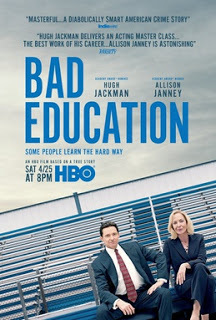
They used to say that education was the only left to us to come out of the rut that we were stuck. At least that is what Amma made us believe when we were forced to burn the midnight oil even during festivities. While others were busy getting ready to usher in the festival in full spirits, in new garments and air of celebrations, we were made to cramp in facts about biology and Newton's law of gravity. She impressed upon us that at the time of reckoning when our future endeavours were at stake, our knowledge and quick thinking that would pull us through interviews and promotions, not stories of merrymaking and feasting with friends.
Then we grew up. The years in the School of Hard Knocks showed us that Amma was only partially correct. True, education would help to lift you up by your boot-straps but 'whom you know' will skyrocket you to greater heights. Knowing people helps to cement transactions and grease you out of difficulties.
We all understand that a good education can be bought. In the real world, we can see that not all who graduated from the Oxbridge or Ivy League got in via merits. There is, of course, donation or diplomatic connexions.
Losers will talk about the law of Nature and how evil gets back you. A crime is a crime only when one is caught. Even apprehension does not equal conviction as one can get the best justice that money can buy. The best legal representations can ensure acquittal on technicalities. It is common knowledge that the law is no friend of the poor. The mere legal procedural process itself can be bankrupting.
This 2019 film is based on a true story that happened in a high ranking American public school district in the State of New York. Its superintendent and his assistant are exposed in embezzlement of using the district monies for the personal needs. The scheme was presented by a student reporter of the school magazine. They were incarcerated.
On another note, in the US, in 2019, another scandal arose over a criminal conspiracy to influence undergraduate admissions decisions at several top American universities by cheating on college entrance exams and fabrication of elite sports credentials. The importance of good education is evident to everyone that people are willing to lie, cheat and find the simplest way to secure a good education for their loved ones, even for their apathetic, non-motivated and intellectually challenged ones. It is just an extension of helicopter parenting.
This story also reminds me of the corrupted system that we all live in. It is filled with the spirit of patronage, serfdom but aloofness at the same time. I guess they call it professional courtesy or honour amongst thieves.
 This work is licensed under a Creative Commons Attribution 4.0 International License.
This work is licensed under a Creative Commons Attribution 4.0 International License.
http://asok22.wix.com/real-lesson
http://.facebook.com/farouk.gulsara
www.riflerangeboy.com
This work is licensed under a Creative Commons Attribution 4.0 International License.


They used to say that education was the only left to us to come out of the rut that we were stuck. At least that is what Amma made us believe when we were forced to burn the midnight oil even during festivities. While others were busy getting ready to usher in the festival in full spirits, in new garments and air of celebrations, we were made to cramp in facts about biology and Newton's law of gravity. She impressed upon us that at the time of reckoning when our future endeavours were at stake, our knowledge and quick thinking that would pull us through interviews and promotions, not stories of merrymaking and feasting with friends.
Then we grew up. The years in the School of Hard Knocks showed us that Amma was only partially correct. True, education would help to lift you up by your boot-straps but 'whom you know' will skyrocket you to greater heights. Knowing people helps to cement transactions and grease you out of difficulties.
We all understand that a good education can be bought. In the real world, we can see that not all who graduated from the Oxbridge or Ivy League got in via merits. There is, of course, donation or diplomatic connexions.
Losers will talk about the law of Nature and how evil gets back you. A crime is a crime only when one is caught. Even apprehension does not equal conviction as one can get the best justice that money can buy. The best legal representations can ensure acquittal on technicalities. It is common knowledge that the law is no friend of the poor. The mere legal procedural process itself can be bankrupting.
This 2019 film is based on a true story that happened in a high ranking American public school district in the State of New York. Its superintendent and his assistant are exposed in embezzlement of using the district monies for the personal needs. The scheme was presented by a student reporter of the school magazine. They were incarcerated.
On another note, in the US, in 2019, another scandal arose over a criminal conspiracy to influence undergraduate admissions decisions at several top American universities by cheating on college entrance exams and fabrication of elite sports credentials. The importance of good education is evident to everyone that people are willing to lie, cheat and find the simplest way to secure a good education for their loved ones, even for their apathetic, non-motivated and intellectually challenged ones. It is just an extension of helicopter parenting.
This story also reminds me of the corrupted system that we all live in. It is filled with the spirit of patronage, serfdom but aloofness at the same time. I guess they call it professional courtesy or honour amongst thieves.
 This work is licensed under a Creative Commons Attribution 4.0 International License.
This work is licensed under a Creative Commons Attribution 4.0 International License.http://asok22.wix.com/real-lesson
http://.facebook.com/farouk.gulsara
www.riflerangeboy.com
This work is licensed under a Creative Commons Attribution 4.0 International License.

Published on July 06, 2020 09:01



